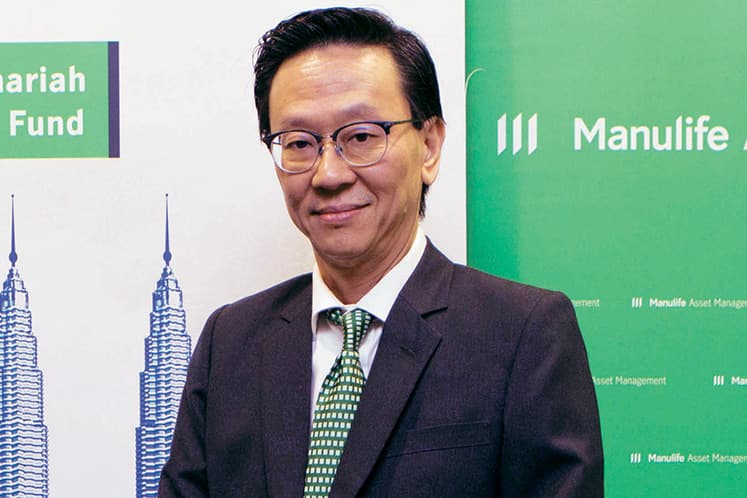
This article first appeared in Personal Wealth, The Edge Malaysia Weekly on April 1, 2019 - April 7, 2019
Manulife Asset Management Services Bhd won three awards at the 2019 Lipper Fund Awards from Refinitiv. Two of the funds continued their winning streak at this year’s event and one took home its first fund award.
Manulife Investment — HW Flexi won in the Mixed Asset MYR Flexible (Provident) three-year category while Manulife Investment — Asia-Pacific Ex-Japan won in the Equity Asia-Pacific ex-Japan (Provident) five-year category. Manulife Investment — CM Flexi won in the Mixed Asset MYR Flexible (Malaysia) three-year category.
CEO Jason Chong attributes the results to various strategies adopted by the fund managers. For instance, Manulife Investment — HW Flexi Fund’s portfolio was anchored by high-dividend stocks, including real estate investment trusts (REITs). The fund managers used a flexible asset allocation to protect the fund’s downside during difficult market situations.
“The small-cap allocation of the portfolio was less than 15%, which helped the fund weather the more turbulent conditions in 2018,” says Chong.
The Manulife Investment Asia-Pacific ex-Japan team focused strongly on stock picking, which was overlaid with country allocation. The investments were made based on the GCMV criteria, representing growth, cash flow, management and valuation.
“Country allocation and stock selection in key themes such as rising consumerism, infrastructure and technology remain the key drivers of the fund’s performance. The allocation to Asean countries, such as Indonesia and the Philippines, and being underweight on North Asian countries were the main positives for the outperformance during the volatile period last year,” says Chong.
Manulife Investment — CM Flexi benefited from early identification of stocks with improving fundamentals in the technology, oil and gas and consumer sectors.
Last year was not an easy one for the two Flexi funds. The team held 20% to 30% in cash throughout the year and did not raise the equity holdings of Manulife Investment — HW Flexi in the middle of the year despite the market rebound.
After the general election, the team reduced the Manulife Investment — CM Flexi’s exposure to the construction sector and other high-beta stocks. “We replaced those stocks with REITs and other high dividend-yielding stocks to cushion the volatility of the fund,” says Chong.
Other events that challenged the Manulife Investment — CM Flexi team were the US-China trade war, quantitative tightening in the US, the Brexit negotiations and a slowing Chinese economy. They employed an active asset allocation strategy to navigate these uncertainties.
“We raised the asset allocation to almost 90% in July last year after the dust had settled following the change in government. We reduced the asset allocation to 70% in December, when technology stocks were being sold off globally on lower iPhone sales guidance from Apple,” says Chong.
The Manulife Investment — Asia-Pacific ex-Japan team stayed opportunistic and picked stocks with good value. “We employed a more dynamic country allocation strategy in 2018, with a shift away from North Asian markets to more domestic-oriented economies and beneficiaries from the trade war supply-chain migration trend, which turned out well,” says Chong.
The geopolitical uncertainties and weak corporate earnings growth domestically will continue to pose challenges this year. Chong says the fund house intends to increase Manulife Investment — CM Flexi’s asset allocation should there be improved news flow from the US-China trade talks and further stimulus by the Chinese government.
“But we are cognisant of the fact that global stock markets are in the late cycle at this juncture. We will continue to raise the fund’s exposure to REITs and other high-dividend-yielding stocks to generate additional income for the fund and buffer it from potential market volatility,” he adds.
The Manulife Investment — HW Flexi team will also tilt towards more quality and liquid counters as the global economy is set to grow at a slower pace. But they do not expect a recession in the immediate term.
“After the rout in emerging markets last year, we do see some of the headwinds receding, with the US Federal Reserve turning more dovish and US dollar strength starting to top out. Currently, Fed funds futures are pricing in for a pause in interest rate hikes this year, with a chance of a rate cut in 2020. Post-sell-off, we see valuations coming down to more attractive levels,” says Chong.
However, the fund house remains mindful of weaker earnings growth and further cuts to forward earnings estimates.
Chong observes that the outlook for Asia-Pacific ex-Japan remains cautious but positive in 2019, given the decent economic fundamentals and relatively cheaper valuations. “Nonetheless, valuations are still fairly attractive, especially for North Asian equities. While the trade war and risks of a global economic slowdown continue to make the headlines, the current valuations allow for better stock-picking opportunities in Asia-Pacific. This will be our focus this year,” he says. — By Tan Zhai Yun
Save by subscribing to us for your print and/or digital copy.
P/S: The Edge is also available on Apple's AppStore and Androids' Google Play.